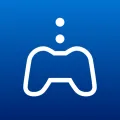Apps Home

The Evolution and Importance of Remote Device Control
Remote device control has become an indispensable part of our daily lives, revolutionizing the way individuals and organizations manage technology. It all began with the need for efficient management of systems spread across various geographical locations. As technology advanced, the demand for controlling these devices remotely grew exponentially, marking a significant shift from traditional, localized IT solutions to seamless, cloud-based systems. Companies and individuals now leverage remote device control not merely as a convenience but as a crucial component of their operational strategy. Take the example of Getscreen.me, a service that embodies this transition by allowing users to control their devices directly from a web browser. This remote access capability has empowered organizations to achieve unprecedented levels of efficiency. Whether it's a company technician performing maintenance tasks on servers halfway across the world or a freelancer managing projects from different devices, the paradigm of control has extended far beyond the physical reach of the users. Remote device control also underpins many innovative business models, enabling service providers to offer support and maintenance without physically being present, optimizing time, and cutting costs. The reach and influence of remote control technologies are not confined to professional domains alone but extend into personal use. For example, parents can monitor and control their children's use of smartphones or tablets to ensure they are not exposed to inappropriate content. The capability to control these devices remotely has opened new avenues for maintaining household discipline and ensuring safety. Furthermore, with increased connectivity across smart devices and the Internet of Things (IoT), the importance of seamless remote control has reached new heights. As we continue to expand the frontier of connected technology, the role of remote device control will become even more vital, not only facilitating aspiration but also driving innovation as we continue to navigate the digital age with heightened efficiency and security.
Technical Mechanisms Behind Remote Access
Understanding the technical infrastructure of remote device control is crucial to fully appreciating its complexity and capabilities. At its core, remote control technology, such as Getscreen.me, is underpinned by several protocols and services that facilitate secure and reliable connections between devices. One of the primary components of these systems is the use of cloud-based computing. This allows data and controls to be processed and stored on remote servers, which can be accessed over the internet from anywhere in the world. The architecture often involves client-server models where the remote control software installed on your phone or computer communicates with a server situated in the cloud. This server acts as a gateway to process and manage user requests, ensuring that data remains secure during transmission. Moreover, modern systems utilize encryption protocols like TLS (Transport Layer Security) to safeguard information against unauthorized access. Security is a cornerstone of these services, as the potential risks of remote access can be significant if not properly managed. One of the more innovative technical aspects leveraged by advanced systems includes the use of accessibility services found in modern smartphones and computers. These services allow external applications to control aspects of user interfaces, such as simulating gestures or keystrokes, enabling more detailed and responsive control from a remote location. For instance, with the GetScreen.me Accessibility service, users can handle pointers and even perform complex gesture simulations on their mobile devices. Another crucial feature is the real-time file transfer capabilities, which permit users to move files across devices easily, regardless of physical location. These technical features collectively contribute to creating a seamless user experience. They ensure operations can occur smoothly and intuitively, replicating the experience of using the device as if it were in your hands, despite the physical distance.
Applications and Uses Across Different Sectors
Remote device control has found applications across a myriad of sectors, each capitalizing on its unique benefits to meet specific needs. In the enterprise sector, remote access solutions have become integral to the functioning of IT support and maintenance teams. For businesses that operate globally, having access to remote support not only ensures quick troubleshooting and system diagnostics but also minimizes downtime and operational disruption. IT administrators can monitor servers and network infrastructure, quickly responding to any issues no matter the time or geographical constraints. In the education sector, the ability to manage and control classroom tablets or computers remotely has opened new avenues for digital learning. Teachers can administer quizzes, distribute learning material, and monitor students' computers during classes to ensure focus and participation. It facilitates a more interactive and engaging learning environment. Similarly, in healthcare, remote device control allows healthcare professionals to monitor patient devices and update systems as needed without inconveniencing the patients themselves. This is particularly vital in telemedicine, where timely access to data can significantly impact patient care. On a more personal level, remote control functionality provides individuals the capability to manage their smart homes more efficiently. Whether it’s adjusting thermostats, monitoring security systems, or managing household appliances, the reach and convenience afforded by these technologies are unparalleled. In financial services, remote control tools enhance the ability to manage sensitive operations securely, such as monitoring transactions and managing enterprise financial systems, without risking security breaches. The broad spectrum of sectors utilizing remote device control underlines its versatility and essential role in contemporary digital infrastructure, highlighting the significant impact it has had on both professional and personal spaces.
Security Challenges and Considerations
While remote device control offers numerous advantages, it also introduces a range of security challenges that need careful consideration. The most pressing concern is the potential for unauthorized access, given that the core function involves controlling devices over the internet. To mitigate these risks, robust security protocols must be implemented. Encryption is critical in this regard, as it protects the data transferred between devices and servers, preventing interception by malicious entities. Services like Getscreen.me employ advanced encryption techniques to safeguard their communications. Furthermore, user authentication plays a vital role in securing remote access sessions. Multi-factor authentication (MFA) is often recommended to add an additional layer of security, ensuring that even if credentials are compromised, unauthorized access remains difficult. Regular software updates are also essential, as these address vulnerabilities that could be exploited by attackers. This means that both the remote control application and the operating system it runs on must be kept up-to-date. Access permissions are another crucial consideration, as users need to be educated on the importance of granting permissions only to trusted applications and individuals. Ideally, a comprehensive security strategy combines these elements, creating a multi-layered defense against potential threats. Organizations deploying remote control technologies must also develop and implement security policies that guide how these tools are used and managed. Proper training for employees is essential to ensure they are aware of the dangers and know how to use these tools securely. As we further integrate remote control technologies into daily operations, maintaining a balance between accessibility and security will be key to leveraging the benefits while minimizing risks, ensuring that remote access remains a safe and reliable option.
The Future of Remote Device Control and Download Options
The future of remote device control is poised for great innovation, with advancements in AI and machine learning playing a significant role in its evolution. As these technologies mature, we can expect more intuitive and autonomous control systems that predict user needs and adjust settings without manual intervention. The integration of AI could lead to predictive maintenance features capable of identifying potential issues before they escalate, thereby enhancing efficiency and reducing unexpected downtimes. The rise of 5G technology also promises to revolutionize remote control systems, providing faster, more reliable connections, and making real-time device interaction smoother than ever. This will particularly enhance the experiences of augmented and virtual reality applications, allowing for seamless remote interactions that feel increasingly more natural and immersive. Additionally, as security remains a major focus, advancements in cryptographic techniques and the development of more sophisticated authentication methods, like biometric verification, will continue to enhance the safety of remote access solutions. Looking at the advancements in quantum computing, these could potentially create a new frontier for both opportunities and challenges in the realm of cybersecurity, necessitating ongoing innovation in encryption technologies. On a practical level, the continuous growth of the Internet of Things (IoT) ecosystem will further drive the complexity and integration of remote control capabilities, leading to smarter and more connected systems. As IoT devices become more prevalent, their management and control will rely heavily on robust and integrated remote solutions. As for accessibility, users can already explore the benefits of these technologies through readily available solutions like Getscreen.me, seamlessly integrated into various platforms. Download for Android devices is available, empowering users to experience full control at their fingertips as they navigate the increasingly interconnected digital world.
Share Your Opinion
Your Email Will Not Be Published.
All Rights Reserved © Apps Home 2025






























Matthieu Mascunan (Matthieu M)
A must have ! This is what i need ! And it work great ! Easy to use ! Thanks Getscreen.me, you're app is part of my system now and with that I will...
Surinder Singh
Excellent app..works flawlessly . Even it works on slowest internet connection
Matthew Fong
This app is proven useful to support the elderly family members remotely. I ended up purchase a year long subscription.
AOP3d tech the wizard
love this remote software it is by fair the best one we have used and we have tried them all team-viewer log me in fixme.it you name it but get scr...
Andrea Missali
It works very well, I can reach and control remotely a smartphone from my PC, simply via browser. It looks like wonderful